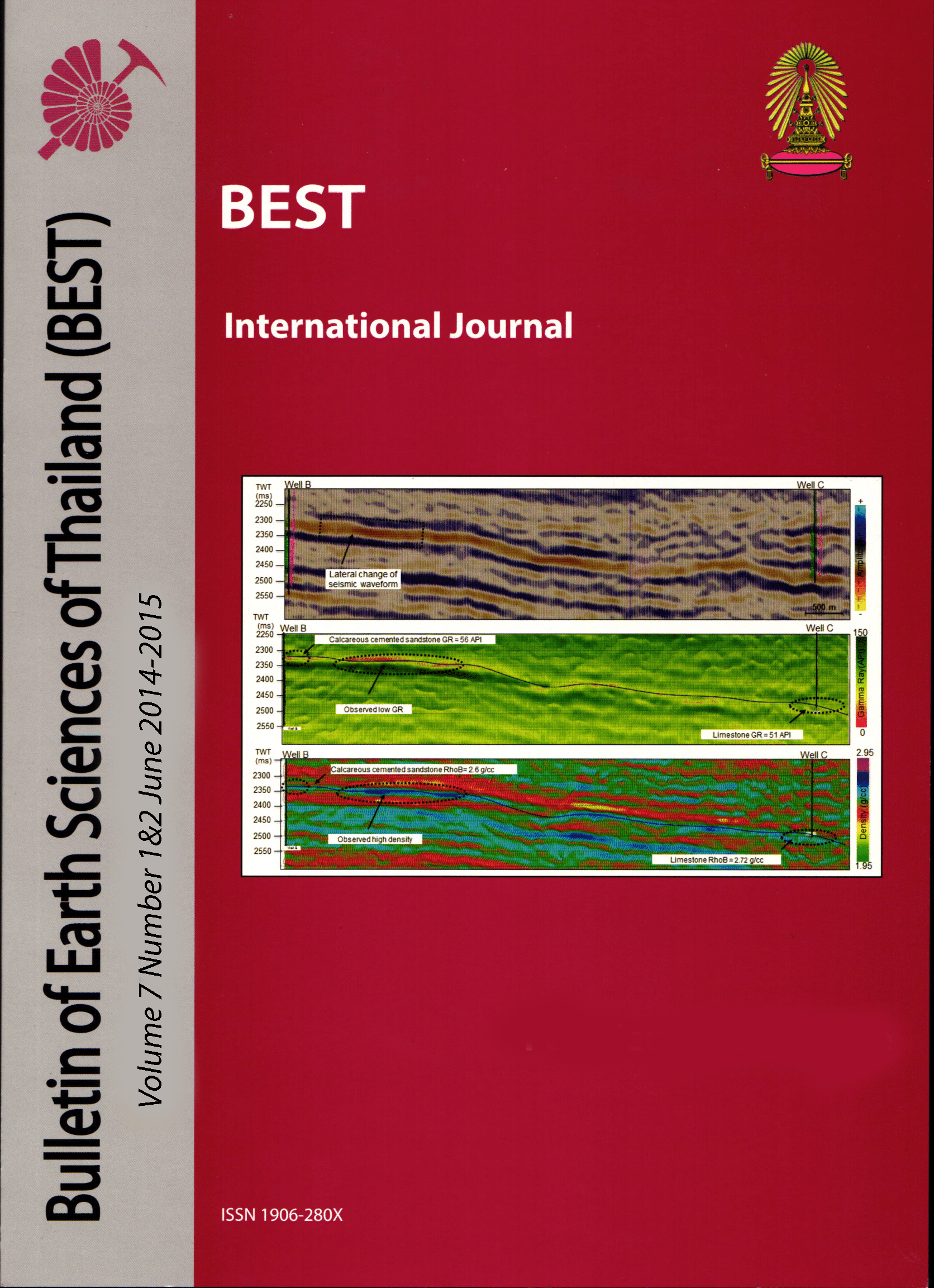Seismic geomorphology of fluvial systems, Pattani Basin, Gulf of Thailand
Main Article Content
Abstract
During the last decade seismic geomorphology has become a key tool for the analysis of a wide spectrum of depositional settings from fluvial to deepwater environments. This study uses seismic geomorphology interpretation of a 3-D seismic data set in the southern Pattani Basin, Gulf of Thailand to analyses the fluvial dominant Upper Miocene to Holocene succession deposited in this basin during this time. This succession contains fluvial features which are well imaged in this seismic data set and the objective of this study was to document the distribution and internal architecture of these fluvial systems in order to better understand the controlling factors on their distribution and geometry. Wide varieties of fluvial styles were found over the short stratigraphic interval from Upper Miocene to Pleistocene section ranging from distributary channel and estuarine deposits in marginal marine environments in the Upper Miocene to lowstand incised valley dominant systems in the Pleistocene. In the later period, large meandering river systems develop in the incised valleys during lowstand with well developed point bars and associated tributary valleys. The controls on channel style in these systems are predominantly related to changes in fluvial discharge associated with climate change in the Pleistocene which in term is related to high frequency, high amplitude sea level changes during this time. In contrast, sea level changes in the deeper section during the Upper Miocene were relatively stable and marginal marine fluvial features are well preserved. During this time, relative sea level is the main control on fluvial accommodation space in this area. The fluvial systems in the shallow section of this study are not good analogues for deeper prospective fluvial systems in the Pattani Basin as previously suggested.
Article Details

This work is licensed under a Creative Commons Attribution-NonCommercial-NoDerivatives 4.0 International License.
Copyright © 2008 Department of Geology, Faculty of Science, Chulalongkorn University. Parts of an article can be photocopied or reproduced without prior written permission from the author(s), but due acknowledgments should be stated or cited accordingly.
References
Clift, P. D., 2006, Controls on the erosion of Cenozoic Asia and the flux of clastic sediment to the ocean: Earth and Planetary Science Letters, v. 241, p. 571- 580, doi:10.1016/j.epsl.2005.11.028
Hansen J., Sato M., Russell G., Kharecha P., 2013, Climate sensitivity, sea level and atmospheric carbon dioxide : Philosophical transactions of the Royal Society. p. 6.
Jardine, E.,1997. Dual Petroleum systems governing the prolific Pattani Basin, Offshore, Thailand : Proceedings of an International Conference on Petroleum Systems of SE Asia and Australasia Conference, p. 351-363.
Posamentier, H. W., and G. P. Allen, 1999, Siliciclastic sequence stratigraphy : Concepts and applications : SEPM concepts in Sedimentology and Paleontology, v. 9, p. 210.
Posamentier, H. W., 2001, Lowstand alluvial bypass systems: Incised vs. unincised : AAPG Bulletin, v. 85, no. 10, p. 1771-1793.
Reijenstein, H. M., Posamentier, H. W., and Bhattacharya, J. P., 2011, Seismic geomorphology and high-resolution seismic stratigraphy of inner-shelf fluvial, estuarine, deltaic, and marine sequqnces, Gulf of Thailand : AAPG Bulletin, v. 95, no. 11, p. 1959-1990.
Samorn, H., 2006, Fluvial reservoir architecture from nearsurface 3-D seismic data, Block B8/32, Gulf of Thailand: M.S. thesis,Colorado School ofMines,Golden, Colorado, p. 156.
Wellner, R. W., and L. R. Bartek, 2003, The effect of sea level, climate, and hysiography on the development of incisedvalley complexes : Amodern example fromthe East China sea: Journal of Sedimentary Research, v. 73, p.926–940.


